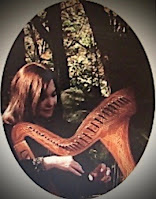© Dr. Jeanne I. Lakatos, Ph.D.

"Let all your things be done in Love." (1 Corinthians 16:14)
Introduction:

- Dr. Jeanne Iris
- Current: Danbury, CT, United States
- Welcome! A few years ago, I discovered an application that artists employ in their works to bring cultural awareness to their audiences. Having discerned this semiotic theory that applies to literature, music, art, film, and the media, I have devoted the blog,Theory of Iconic Realism to explore this theory. The link to the publisher of my book is below. If you or your university would like a copy of this book for your library or if you would like to review it for a scholarly journal, please contact the Edwin Mellen Press at the link listed below. Looking forward to hearing from you!
Announcements
19 December, 2025
Sweet Dreams (Codladh sámh)
18 December, 2025
"Snow and Wind"
17 December, 2025
Trains! A Phantasmagorical Journey
16 December, 2025
Divine Breath
One morning, I was inspired by the homily of our local priest, 'Fr. Tim.' He was referring to the Holy Spirit and the Hebrew term for spirit: breath. Hence, I penned the following:
Divine Breath
present on the altar
Surrounded by a feeling of His welcoming Spirit,
a Blessed breath causes one
the Cleansing Air of Love and Forgiveness,
to exhale:
Over and over,
to breathe in the Holy Spirit,
from His Divine Breath:
the salve that soothes the wounded soul.
Breathe in.
© Jeanne Iris Lakatos
To hear my reading of this vers, please click HERE.
15 December, 2025
Dusk
14 December, 2025
Sandy Hook Elementary School Tragedy in Newtown, Connecticut
Blessings,
Dr. Jeanne Iris
13 December, 2025
Memorial of Saint Lucia (Lucy): December 13
12 December, 2025
Harmony of the Spheres
Thus, music of the spheres represents the harmonics of human thought whereby one idea, emanating from a human being, extends to another throughout the centuries, and overtones or nuances of thought create a new harmonic of the original conception. This new harmonic, then, resonates with another interpretation, and soon, there are many new concepts formed that connect with the original resonating thought.
11 December, 2025
Take Time
Take Time
© Jeanne I. Lakatos
(You can hear my reading of this poem by clicking HERE.)
10 December, 2025
Winter Sky
09 December, 2025
Sydney Owenson (Lady Morgan): 19th Century Revolutionary
08 December, 2025
The Solemnity of the Immaculate Conception
Immaculate Conception
by Jusepe de Ribera, 1635
Many people misunderstand the term, Immaculate Conception, thinking that because this term has been associated with Jesus' mother, Mary, and the Virgin birth, that because He was conceived by the Holy Spirit, that became the immaculate conception. However, those individuals would be wrong.
Mary was born with her soul in an immaculate state in order to give birth to the Son of God.
06 December, 2025
A Gathering of Souls
Friendship bound by a common thread
nourished with Eternal Bread
of kindness, love, and stories shared
revealing truth to one who cared.
These are the Blessings we unfold,
as youthful dreams become 'days of old'
and gatherings are more carefully planned,
honoring love as a theme so grand.
Refrain from giving confusion reign!
A shivering soul has warmth to gain,
I pick up my needle with colorful thread
Repair the tattered.
Share the Bread.
© Jeanne I. Lakatos
(To hear my reading of this poem on Pod-omatic, click HERE.)















